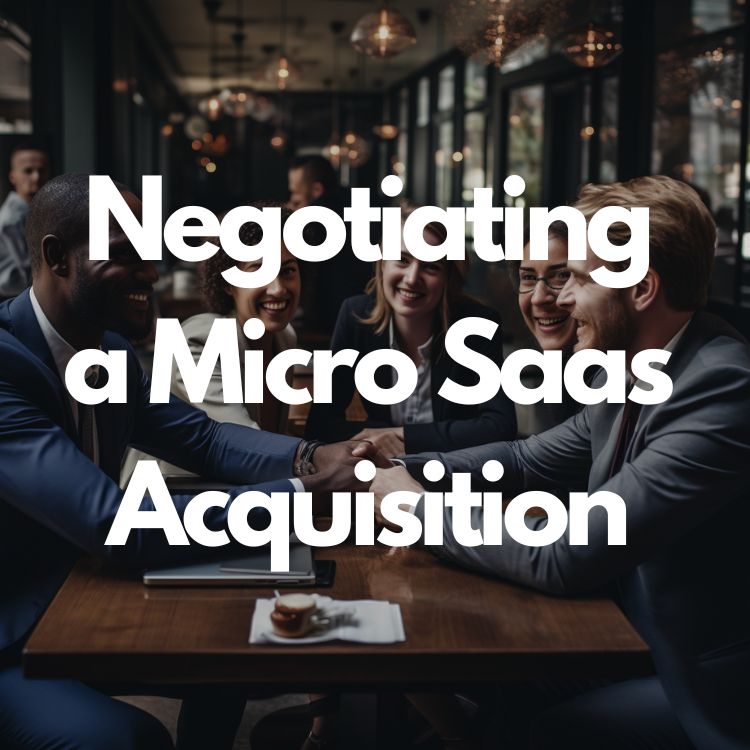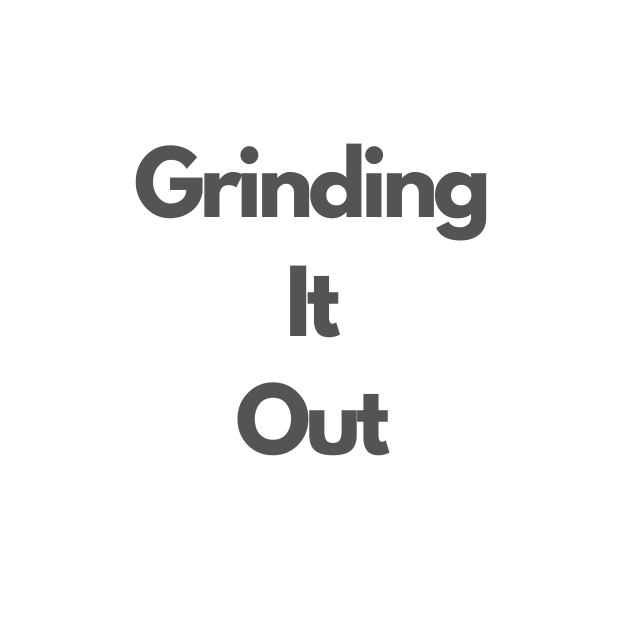Episode Transcript
It's going to be a short one this week. I want to talk about the art of waiting and how that plays into our strategy. And I think what will make us successful in the longterm? I'm sure. Like most of you, I grew up on the move fast and break things. Concept. These are all very tweetable. Sometimes they're even true. Particularly in winter take all markets are being early in a tech cycle like Jasper was with AI writing and chat GPT and stuff like that.
That's not what I'm talking about here, though. This is a slightly different narrative. Maybe try thinking in years instead of in months or. Just instead of in terms of project. So.
Obviously the tech world moves extremely fast. But. When we go to buy something, sometimes we'll send an offer. And we'll take some time to think about it. It usually doesn't take us very long. If we have the financials to come up with some kind of number and structure that makes sense for us. And we send that over and.
Eh, on more than one occasion, maybe, maybe six or seven times, we hear back in about 45 seconds and it's pretty close to a hell no. Or a nephew or something like that. And that's okay. Right. We had a number that we had in mind that we were comfortable with and we thought was fair. And. We sent that over. And what often happens though, is that other buyers fall through and they come back to us and say, Hey, you know, would you be interested in that that deal, that actually sounds.
Actually sounds good now. Sometimes it's yeah, sometimes it's no, but the key there was patients, right. We just think about a deal. We make an offer. We think is fair that we can actually afford. And we send it over. We're not going to be the best at everything. We have a team of five full-time people and that's it. So we are good at growing certain things, but I don't think that we can grow anything nor do I think that we should try. There are certain companies we see that I think would be great financial bets that I have low confidence that we could actually execute on with our current team.
Again, we're bootstrapped. And perhaps there is a fund in our future, or we go and we raised some money and have a little bit of a war chest, and a little bit more flexibility on who we can hire. But for now, We have this team, we have certain, we have a certain skill set and we can only do so much. We can only take on so much. And so even with our limited amount of capital, we're only allowed to make so many bets.
Once that number goes to roughly zero. Again, patients we can kind of wait to get more money, right by, by working a day job or whatever. Go and find more cash to go deploy into XO. Or we will reach a compounding velocity that lets us do additional acquisitions in a given year. So. In an ideal world, we're buying cashflow positive businesses, those kickoff, some kind of revenue. Every month we accumulate that profit and redeploy it.
In additional acquisitions or in growth, but ideally even after we're doing some growth, Exercises for that particular company, there is still some amount of profit leftover. We're certainly not there yet, but the idea is that we would buy enough. Recurring revenue that there is some profit leftover that allows us to, at the end of the year, instead of taking a distribution, we would just redeploy that capital and go buy more companies. I think if we could get to a few hundred thousand in profit every year and we would be able to buy. 2 3, 4 different businesses every year, just from the cashflow of the existing portfolio. That's really the flywheel that we're trying to go for. And if we can't get there, then that's when we'll consider raising a fund, but we are trying to bootstrap to a million.
And recurring revenue. We've gone months without buying anything like right before all this LLM stuff exploded. We didn't buy anything. We didn't see anything that we liked for four months. And that's totally okay. We can just kind of. Look inward and do some maybe larger scope things that we've been putting off or reinvest in that redesign that we knew was going to take out one whole developer for two months. Right. We can do things like that. If we're not always on this, this rat wheel of trying to continuously buy and redeploy.
Again, part of the reason that we don't have a fund right now is that there would be pressure to deploy capital. And while we're experimenting with what this team looks like, what this model feels like, what we can actually accomplish. It's nice to be able to just say, you know what? We like this deal, but we don't love it. We're just going to wait and see what else comes along. And there will always be another bus to go hop on.
So. We very rarely feel FOMO. Although of course there are deals that we've passed on that I wish we had the cash fuller because they they looked like really great deals, but This also works on the other end too. So not just on buying stuff, but when we go to sell, we can always wait to recoup our capital. So let's say we make a bet and we buy something for a hundred grand and it cashflows.
You know, 5,000 a month when we buy it, but it shrinks a little bit. Now it's only a 2,500 a month. So we've lost 50% of our investment. If we turned around and sold that today, we would lose half of our cash that we put into it. However, if you zoom out a little bit, And you just wait, you can also recoup your initial investment in that way as well. You don't always have to, or try. I at least try not to.
Think about making the money back in the same place that I lost it. So a really easy example is if you bought, I actually did this recently. I bought first Republic stock and it went to zero, but I didn't try to, I mean, that one got delisted because the whole banking thing blew up. But let's say you lost 50% on a stock. You don't need to go and make that money back on that same stock you could sell cactus. You know what I mean? You could go do anything. You could go build a digital product. It doesn't matter. You could go keep working at your day job and save up again. You don't have to make that money back in the same place that you lost it.
So being conscious of that though, still, even if we bought something for a hundred grand, that was cash flowing 5,000 a month and it went down to 2,500 a month. We can just wait. And if that 2,500 was consistent now, of course, if it goes to zero, then that's a whole different issue. But oftentimes that's not the case. If it got to 5,000 a month and we did our diligence correctly and somehow it went.
You know, got cut in half for some unforeseen reason. There should be a way for us to kind of keep it there at, with, with a modest amount of effort. And just wait, we can just wait it out. So we're trying to think again in years and not months, and here's a little chart that shows what even 3% month over month growth looks like and effectively you double your recurring revenue in two years. And I know that in the SAS land, especially in the venture world, that is laughable, right?
That's embarrassing. That's a failed investment. Nobody would want to take that deal. You would not have a fund, you would be the world's worst fund manager. Maybe. I don't know. But for what we do. And if you've ever doubled your money on an investment, it's it's amazing. It's awesome. And I think if you know what that feels like, you can understand why we get excited about something as paltry and small as 3% month over month growth.
We're also thinking about this in terms of building relationships and building a brand, it just takes time. And there's, there's really no substitute for that. Other than this little thing called advertising, which promises this and sometimes works, e-commerce brands are addicted to Facebook ads and
Google clicks, but the other way to do it is to build it just one brick at a time, which is what we're doing. And it's starting to pay dividends. We get deals referred to us. We have a little bit of a reputation now. We have nine different sellers that people can go reach out to and speak with. If they're concerned about how we run our process. So we're going to continue to just build this place one brick at a time, try and run it profitably and make XO. And killable. So it's so for us, the art of waiting is not the inability to act. It's it's, it's just making a bet and letting it play out or acting wisely or giving yourself the. Space to make the right decision and the time to.
Play a long game.
It's obviously very difficult in the short term to predict whether we could double a company in X months. That's a very hard thing to predict, but over a longer time horizon, can we double something? If we buy it correctly, I think the answer is a consistent, yes. I have, of course intentionally left out some other things that wedding can help with finding the right business partners that took me 18 months to find Danny and Henry.
And we went through a few other partners, people who left or didn't work out or didn't want to do it anymore. And it just took a long time to find the right people and we've had a solid group down. Hiring. Is a really difficult thing, giving yourself some time. To hire the right person. Finding the right acquire to being patient. They're not being in a rush to sell.
And of course stress waiting can help with your stress management too. If you're not trying to do. Everything everywhere. All at once. And of course this was written by probably one of the most impatient people I've ever met.


